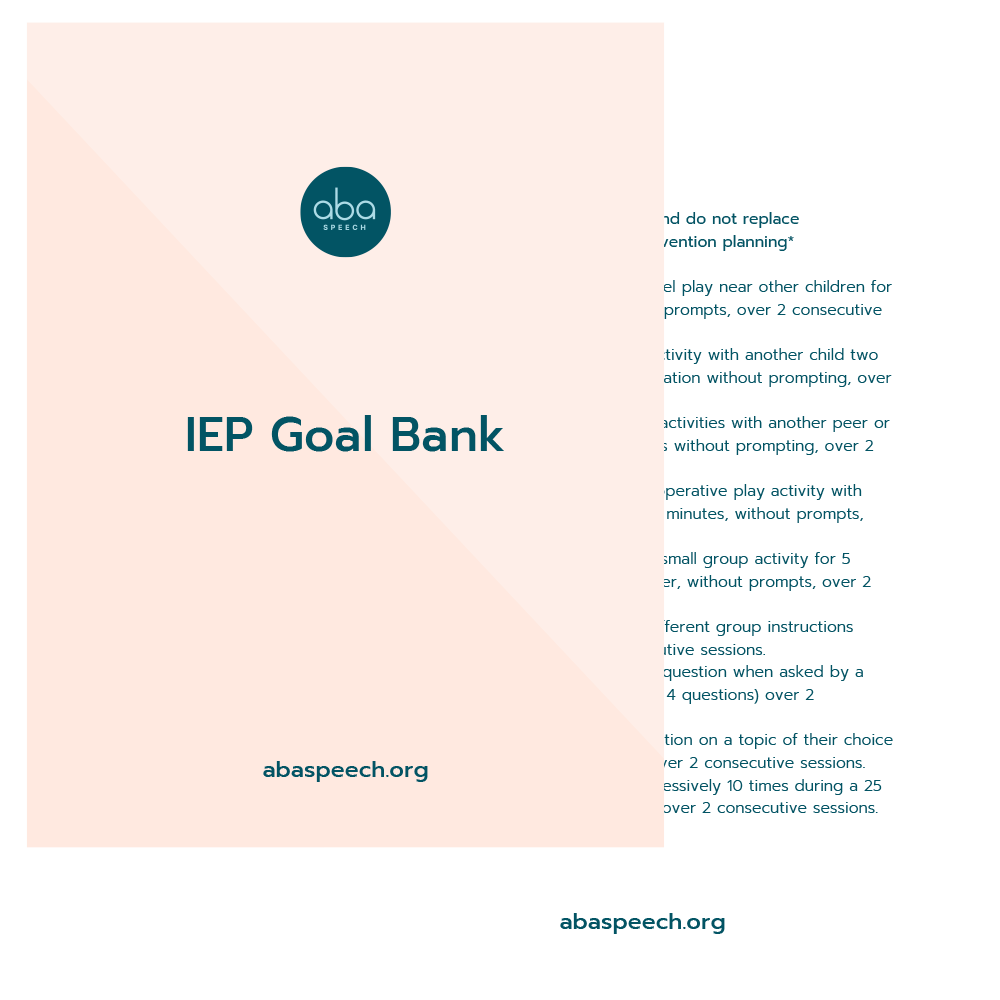Jargon is literally defined as difficult to understand for people outside of the specific field. ABA jargon is definitely a challenge for individuals not in the field of applied behavior analysis. Working with students in the ABA setting requires the understanding of the jargon to best provide services in ABA settings. It is also really important that all professionals understand they have an ethical responsibility to use simple terms that are understood by all team members! Take a look at some of the specific jargon for ABA settings to effectively work collaboratively for all students!
Antecedent
This first one has a specific meaning in an ABA setting and is the condition or behavior or stimulus that happens before a specific behavior. An example of this definition of antecedent is: The teacher gets out a book; the student runs away from the circle; – the student is given a break from class. The antecedent is the teacher getting out a book. Remember it is what causes the behavior.
Behavior
Of course, it is important to note that behavior in an ABA setting is going to be specific to what a student is doing and how they are acting. Let’s look at our example from above again. The teacher gets out a book; the student runs away from the circle; the student is given a break from class. The behavior is the student running away. Behavior is the action of the student.
Consequence
When there is a specific behavior, oftentimes there is an outcome of that behavior which is a consequence. The result of a behavior is a consequence, but consequences in ABA settings will be specific to the child and the needs of the child. They are not necessarily negative, as some assume when they hear the word consequence. Back to our example from above again: The teacher gets out a book; the student runs away from the circle; the student is given a break from class. The consequence is the student being given a break from class. Sometimes a consequence is necessary to keep a student on track.
Data
In an ABA setting, data is the results of some type of measurement, but in an ABA setting the data is in relation to behavior analysis. Remember data can mean a lot of things in the world of education, but in an ABA setting data it is going to be a measurement of some type of dimension of behavior.
Generalization
When using the term generalization, we are referring to when a student learns a behavior in the ABA setting, then also uses the same behavior or learned behavior in a different place or setting like at home with the child’s family. A really great example is when a student learns to request listening music at school with a speech therapist and then later requests listening to music at home with their family. Generalization is the overlap from school or therapy to other settings.
Motivation
This is our general desire to do something. All students are motivated by different things and in an ABA setting, motivation is valuable. An example of motivation is Johnny not being allowed to watch television at home, so at school is motivated to engage in the video. Motivating students is a huge piece to the puzzle of engagement and using what motivates students to teach them is a game changer.
Multimodal Communication
Here we are talking about all the ways we can communicate. Students in an ABA setting communicate in a multitude of ways including, speech, vocalizations, gestures, sign or even augmentative communication. Being understanding of multimodal communication is a huge part of an ABA setting.
Pairing
This is an important strategy in an ABA setting. Pairing is one of the first things that occurs in an ABA setting with a new student or client. The ABA pairs themselves with reinforcement, meaning anything the student enjoys (preferred toys, hugs, candy), to build a rapport with the child. When pairing with the student and providing the student with what they enjoy and reinforcing the relationship, there are more benefits from the setting.
Prompting
Prompting clients is a way to ensure clients do what is asked of them. Prompts are the instructions, gestures (including pointing), or models that help elicit the correct responses from children. Here are two examples: I asked Trevon to pick a book while pointing to a book. Pointing to the book is a prompt. Another one using modeling is when asking a student to clap his hands, while also modeling the action for them. Modeling the action is a prompt.
Reinforcement
A reinforcer is something that increases a specific behavior and also increases the use of the behavior in the future in similar situations. Here is an example: Don wants a break and says, “Can I have a break?” The teacher says, “Sure, Don, you can have a break.” Don asking and being reinforced with a break will increase the future frequency of this requesting behavior in similar conditions. Reinforcement may be different for different children but is a positive way to increase wanted behaviors.
Three-term Contingency
This is a combination of the antecedent, the behavior, and the consequence together. Simply put, an antecedent is seeing a Finding Dory book, the behavior is asking to buy the book, and the consequence is then buying the book. Three-term Contingency combines some of the terms above into one scenario.
ABA jargon is used in ABA settings, but may be new to anyone who isn’t a behavior analyst. It is imperative that everyone on the team understand the jargon being used for the best interest of the child. Bookmark this list for future reference to ensure everyone is on the same page on the team and to make sure to fully understand all of these ways of describing behavior! ABA jargon explained is a great resource to use in the future!

0 Comments